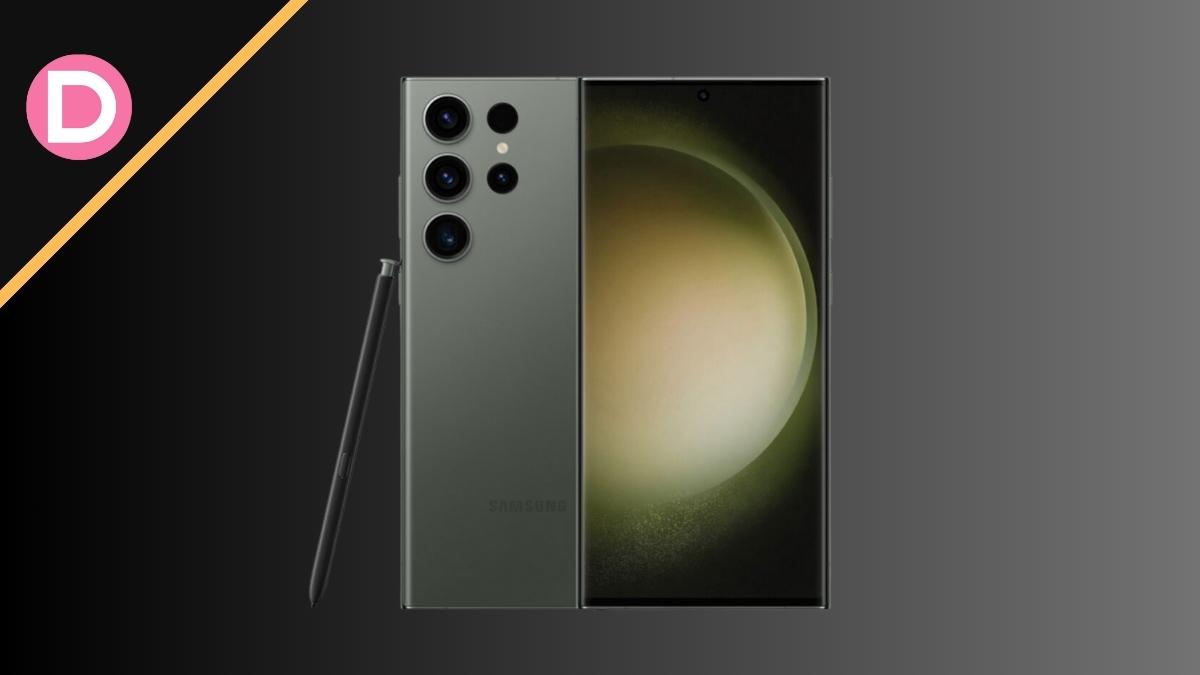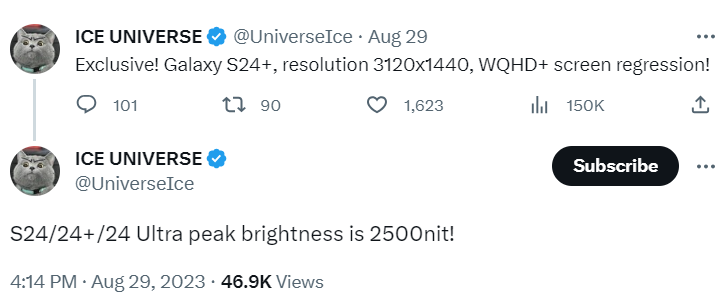The Samsung Galaxy S23 lineup didn’t use the latest display technology, especially for the base models. The S23+ was stuck with 1080P, LTPS, and 1750 Nits of brightness. All three models were stuck with a slight tweak of the M12 display material. But they didn’t get the new M13 display material.
The efficiency of the panel of the S23 Ultra was good. However, the highlight control during HDR video playback was still behind competitors like the iPhone 14 Pro. Samsung’s panels must play catch up even with color accuracy in upcoming models.
A major con for the Samsung Galaxy S23+ was the display. You weren’t getting a higher 1440P resolution even after paying upwards of 1000$. According to an exclusive leak from famous leaker Ice Universe, Samsung is changing this for the S24+. This means that many enthusiasts will pick up the Samsung Galaxy S24+.
The leak says that the S24+ will have a 3120*1440P resolution. This means the phone will pack much more pixels per inch than the current 2340*1080, which is just FHD+.
3120*1440 is effectively WQHD+, which means the S24+ will have a sharper display. The difference is most apparent in the sharpness of text and the overall image quality when consuming content.
This bump in resolution will not affect the battery life. The phone is moving to a better and more efficient SOC, and One UI is typically battery-efficient. Moreover, Samsung won’t enable 1440P out of the box. Users probably have to allow this manually in the Display Settings options.
For now, we don’t have other details on the panel of the S24+. We probably won’t get LTPO refresh rate handling for the base model and the S24+. But we can expect it to still feature an LTPS variable refresh rate, which is nearly as good as LTPO if they tune it right.
We can expect a high 120Hz refresh rate, and the same leak also claims that the phone will have 2500 Nits of brightness. For context, the S23 lineup tops at 1750 Nits of peak brightness. The jump from 1750 to 2500 isn’t dramatic, but it’s a good upgrade nonetheless.
The brightness of displays isn’t something that increases linearly, so doubling the nits/ lux number won’t double the perceivable brightness. Since the perception of brightness nits is logarithmic, any visible display under direct sunlight is good enough. Samsung’s S23 lineup already does this well; the S24 line will take it further.
We have seen Samsung show off a display with over 2000 Nits at CES 2023, and we all expected it to make its way to the upcoming S24 lineup.
We’ve already seen the 2000 Nits number from the iPhone 14 Pro before, 2600 Nits from the Xiaomi 13 Ultra, and more crazy numbers. These are all misleading since they rarely touch these peak numbers. Only specific bright areas of the screen reach this number under direct sunlight when viewing HDR content. Hence, the peak brightness in High Brightness Mode is more critical, which won’t make much difference.
We are still several months away from the official launch of the S24 lineup. The accuracy of leaks increases with time, and we’ll get a clearer picture eventually. For now, take this leak with a dollop of salt since it’s too early to judge despite the remarkable accuracy of the source.




